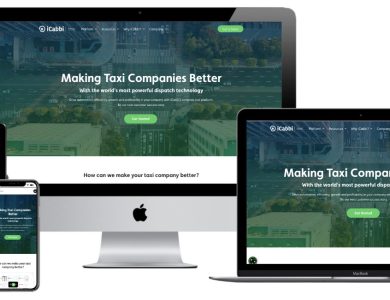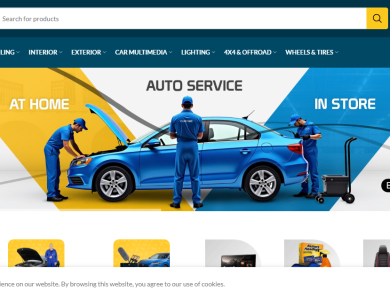
Landing Page Design & Optimization: Best Practices for Success
Landing Page Design & Optimization: Best Practices for Success
Creating an effective landing page is essential for any online marketing campaign. A well-designed landing page can significantly increase conversion rates, lead generation, and ultimately, sales. Whether you’re running a pay-per-click (PPC) ad, email marketing, or social media campaign, sending visitors to a properly optimized landing page can mean the difference between success and failure.
In this guide, we will explore the best practices for landing page design and optimization to help you achieve your desired results.
What Is a Landing Page?
A landing page is a standalone webpage that is designed with a single focused objective. Its purpose is to convert visitors into leads or customers by encouraging them to take a specific action, such as filling out a form, signing up for a newsletter, or making a purchase. Unlike a typical website page, a landing page has no distractions like navigation menus, sidebars, or multiple calls to action (CTAs). This streamlined approach helps keep the user focused on the desired goal.
Why Landing Page Optimization Matters
Landing page optimization is crucial because it directly impacts your conversion rates. A well-optimized landing page ensures that you are making the most of the traffic you’re driving to your site. By improving various elements like design, layout, and content, you can enhance user experience and motivate visitors to take action.
An optimized landing page also ensures that you’re not wasting your advertising budget. Every visitor that doesn’t convert represents lost revenue. Through consistent optimization, you can improve performance and increase your return on investment (ROI).
Key Elements of an Effective Landing Page
When designing and optimizing a landing page, several key elements should be considered to maximize its effectiveness.
1. Clear and Compelling Headline
The headline is the first thing visitors see when they land on your page. It needs to grab attention and quickly communicate the value of what you are offering. A strong headline is:
- Clear and concise
- Focused on benefits, not features
- Relevant to the user’s intent or the ad they clicked on
For example, instead of “Our Software is the Best,” try something like “Boost Your Productivity by 50% with Our Software.”
2. Engaging and Relevant Visuals
Visuals play a critical role in engaging visitors and conveying your message. Use high-quality images, graphics, or videos that resonate with your target audience. Make sure that any visuals on your landing page:
- Are relevant to the product or service
- Support the page’s message and purpose
- Are optimized for fast loading to prevent slow page speeds
3. Focused Call to Action (CTA)
The call to action (CTA) is the most important element on the landing page. It is the button or link that tells visitors what to do next. An effective CTA:
- Is clear and action-oriented (e.g., “Sign Up Now” or “Get Your Free Trial”)
- Stands out with contrasting colors
- Is located above the fold (visible without scrolling)
- Uses persuasive language that encourages immediate action
It’s also important to minimize distractions around your CTA. Make sure there is no competing information that could confuse or delay the user’s decision-making process.
4. Concise and Persuasive Copy
Your landing page copy should be concise yet persuasive. Visitors need to understand what they’re getting and why it matters to them. Focus on benefits rather than features and use language that resonates with your audience. When writing copy, ensure that it:
- Aligns with the headline and CTA
- Addresses potential objections
- Highlights the unique selling points (USPs) of your offer
- Includes bullet points or short paragraphs for easy scanning
For example, instead of listing features like “500GB of storage” or “fast processors,” highlight the benefits: “Store thousands of files securely” or “Run heavy applications smoothly.”
5. Social Proof
Social proof, such as testimonials, reviews, or case studies, can greatly increase trust and credibility. Adding evidence that others have successfully used your product or service reassures visitors that they are making a good decision. Types of social proof to include:
- Customer testimonials
- Case studies or success stories
- Ratings and reviews
- Logos of companies or clients who use your product
Make sure your social proof is visible and relatable to your target audience.
6. Minimalistic Design
A clean and minimalistic design keeps visitors focused on the main goal. Too many design elements, flashy animations, or excessive text can overwhelm visitors and cause them to leave the page. A simple, well-structured design enhances the user experience and increases the likelihood of conversions. Best practices for minimalistic design include:
- Plenty of white space to improve readability
- Minimal navigation options (ideally none)
- Consistent color schemes that align with your brand
- Mobile-responsive design for optimal viewing on all devices
7. Fast Page Load Speed
Page load speed is a critical factor in landing page performance. Studies show that visitors are likely to leave a page if it takes more than a few seconds to load. A slow landing page not only frustrates users but also negatively affects your search engine rankings. To improve load speed:
- Compress images and videos
- Minimize the use of JavaScript and heavy scripts
- Use a content delivery network (CDN) to distribute assets globally
- Optimize your website hosting for performance
8. Trust Signals
Trust signals help reduce uncertainty and encourage visitors to take action. These can include:
- Security badges (e.g., SSL certifications)
- Money-back guarantees or refund policies
- Contact information, such as a phone number or email address
- Privacy policy links
Including these elements can reassure visitors that your page is secure, reliable, and legitimate.
Best Practices for Landing Page Optimization
Now that you know the key elements of a successful landing page, it’s time to explore how to optimize them for maximum performance.
1. A/B Testing
A/B testing is one of the most effective strategies for landing page optimization. It involves testing different variations of your page to determine which version performs better. This could include changes to the headline, CTA, images, or even the page layout. With A/B testing, you can:
- Identify which elements resonate best with your audience
- Make data-driven decisions for improvement
- Continually optimize the page based on results
A/B testing should be an ongoing process to ensure that your landing page is always performing at its best.
2. Analyze User Behavior
Analyzing user behavior on your landing page can provide valuable insights for optimization. Use tools like heatmaps, scroll maps, and session recordings to see how visitors interact with your page. This data can reveal:
- Where visitors are clicking
- How far they scroll
- Which sections they spend the most time on
By understanding user behavior, you can adjust the layout, design, or content to improve engagement and conversions.
3. Optimize for Mobile
With more than half of all internet traffic coming from mobile devices, ensuring that your landing page is mobile-friendly is critical. A mobile-optimized landing page:
- Loads quickly on smartphones and tablets
- Features large, tappable buttons for easy navigation
- Avoids pop-ups that are difficult to close on mobile
- Resizes content for smaller screens
Neglecting mobile optimization can result in a significant loss of potential leads or sales.
4. Leverage Urgency and Scarcity
Creating a sense of urgency or scarcity can compel visitors to take immediate action. Examples of how to create urgency include:
- Limited-time offers (e.g., “Offer Ends in 24 Hours”)
- Countdown timers
- Stock availability (e.g., “Only 3 Items Left”)
These tactics encourage visitors to act quickly before the opportunity expires.
Conclusion
Landing page design and optimization are crucial for the success of any digital marketing campaign. By implementing best practices like clear headlines, compelling CTAs, concise copy, social proof, and mobile optimization, you can significantly improve your conversion rates.
Remember, optimization is an ongoing process. Continuously test different elements, analyze user behavior, and make data-driven decisions to ensure that your landing page is always performing at its best. With consistent effort and attention to detail, you can create landing pages that convert visitors into leads, customers, and long-term advocates for your brand.



